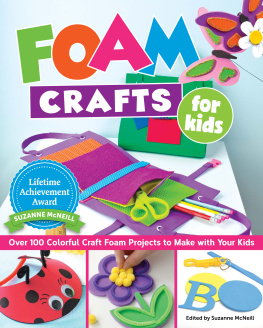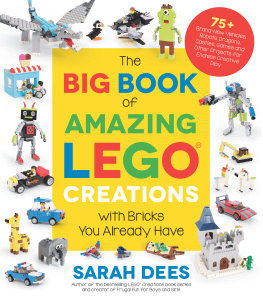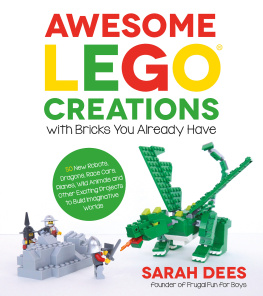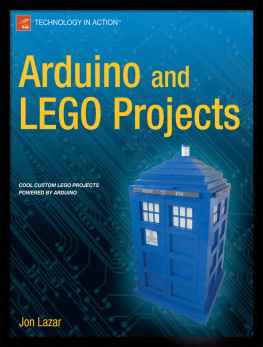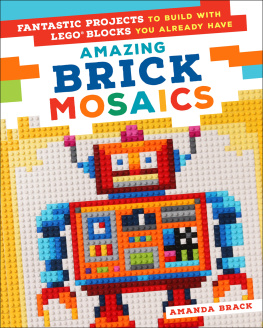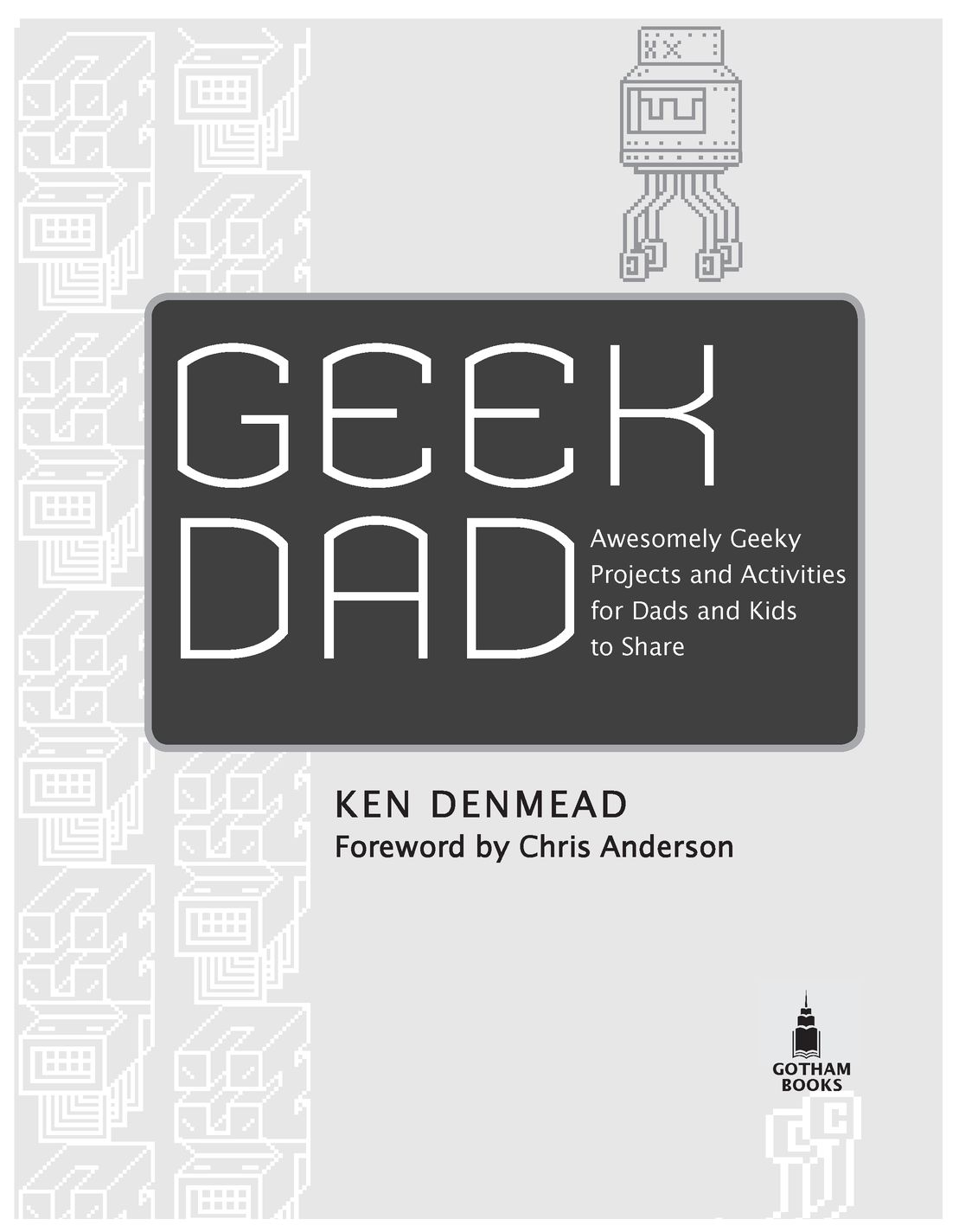Table of Contents
To my amazing wife, Robin, who has seen fit to encourage and enable my geeky traits while helping make me the best father I could ever hope to be. This book would not exist without your love and partnership, and I would not be the happy GeekDad I am. I love you!
To my boys, Eli and Quinn, who are enough like me that I can share much of the stuff I geek-out over with you, but are different enough from me that you show me new things every day. You are the reasons I did this. Grow up strong and geeky!
And to my parents, Ellen and Walter: I dont imagine the path Ive traveled has been quite the one you expected, but I figure youre pretty happy with where Ive ended up. Thank you so much for starting me out on that path with such good preparation and support, and for being there for me every step of the way.
Special Thanks
Three years ago, a man, of whose fame and shrewd intelligence I was only then vaguely aware, put out a call for volunteers to write for a blog called GeekDad. I took what I thought was an outside shot, and was lucky enough to be accepted by Chris Anderson to contribute.
Six months later, he asked me to take over running the blog, and once Id scraped my jaw off the floor, I enthusiastically accepted.
The time since then has been an adventure, and a tectonic shift in the direction of my life. I am living a life I could barely have imagined and have been lucky enough to pay the favor forward to other geeky parents who have come to write for GeekDad, too. But it all started with the entrepreneurial generosity of Chris Anderson, the founder of GeekDad, to whom I am eternally grateful.
A whole new world
Of critical import in the whole I got to write a book process is being given the chance. Very special thanks go to Megan Thompson at LJK Literary for discovering me and nursing me through the proposal process, and Jud Laghi for getting my proposal looked at by all the right people.
And all the right people would be my editor, Lucia Watson, who helped me take a bucketful of cool ideas and present it in the (hopefully) fun and readable tome you now hold, and assistant editor Miriam Rich who has guided me through the strange new world of publishing.
I realize Ive been very lucky to have fallen in with such patient and professional people, and I cant express my gratitude for how much theyve done for me deeply enough. Thanks!
And theres no way Im leaving them out
The real success of the GeekDad blog comes from its family of writers, and I cant take credit for this book without giving some back to the team that helped make it all work: Anton Olsen, Brad Moon, Chuck Lawton, Corrina Lawson, Curtis Silver, Daniel Donahoo, Dave Banks, Don Shump, Doug Cornelius, Jason B. Jones, Jenny Williams, John Baichtal, John Booth, Jonathan Liu, Kathy Ceceri, Lonnie Morgan, Matt Blum, Michael Harrison, Moses Milazzo, Natania Barron, Paul Govan, Russ Neumeier, Todd Dailey, Vincent Janoski, and the Mystical Magical Z.
Additional thanks go to Matt Blum, my right hand at running the blog, for his help copyediting the manuscript, and Bill Moore, Dave Banks, Russ Neumeier, Andrew Kardon, Brian Little, and Natania Barron for contributing projects to this book.
And thanks to the crew of Starbase Phoenix: On the edges of known space, a fire burns to light the way. You guys are that fire.
Foreword
by Chris Anderson, Editor in Chief of Wired
Heres the challenge of being a GeekDad. Youre a geek. Youre also a dad. Geeks want to do cool projects, ideally involving science, technology, and anything that comes from Japan. Dads, meanwhile, want to spend time with their kids, ideally doing something kids want to do. Most of the time, these two forces are in opposition. But they dont have to be!
The origins of this book, and the Web site that inspired it, were in finding ways to reconcile the call of the geek with the nature of the parent. In early 2007, I started GeekDad mostly for myself: I had four (now five) kids, all under ten at the time, and just could not bear the thought of playing Candyland one more time.
I was looking for projects and activities that were both fun for them and fun for me. Not fun for me and boring for them (most of my geeky stuff) or fun for them but boring for me (most kid stuff), but fun for both of us. In other words, a worthy challenge for all ages.
I hoped that there were other people out there with the same ambition who might respond to my posts. There were. Today, a couple years after the site launched, it attracts more than a million readers per month and has more than two dozen contributors. Led by Ken Denmead, who has run the site since late 2007, GeekDad. com, now an official Wired blog, has become one of the top parenting sites on the Web. It turns out that the nexus of geekdom and parenting is a rich seam indeed. Now Ken has taken it to the ultimate degree: the book youre reading. If only such a thing had existed three years ago when I needed it!
My own quest for the perfect Geek/Dad intersection began with LEGO Mindstorms robotics. About three years ago, my boys (then nine and six) were hugely into LEGO, while I was getting into robotics. Id also been given an RC plane, which the boys and I had tried relatively unsuccessfully to fly. Wed also been given a LEGO Mindstorms NXT kit and had dutifully made all the robots in the instruction manual and left thinking what next?
It was clear we were never going to be incredibly good at either LEGO Mindstorms or RC planes, given all the amazing things people could do with both, as evidenced by the videos we looked up on YouTube. And frankly, as a geek, I couldnt see the point in doing stuff that other people had already done a lot better than we could.
But while out on a run, I got an idea. The sensors available for Mindstorms were pretty cool, including gyros, an electronic compass, and accelerometers. NXT also had a Bluetooth and was compatible with other Bluetooth devices, possibly including Bluetooth GPS modules.
What do you get when you put that all togethergyros, accelerometers, GPS, and a computer? An autopilot! If we couldnt fly the RC planes well, maybe we could invent a robot that could. And for all the cool things that people had done with Mindstorms, the one thing nobody had done yet was to make it fly. A worthy project had arrived! We would design the worlds first LEGO Unmanned Aerial Vehicle (UAV)a fully autonomous LEGO-piloted drone.
We started with the mechanical bits. At the time, there was no way to drive RC servos directly from Mindstorms, so we designed a sliding tray with a Mindstorms motor that slid it back and forth, and mounted the planes rudder servo on that. This way youd always have RC control, but the Mindstorms controller could override it by sliding the whole servo forward and back. Likewise for turning the autopilot on and off. In the absence of an electronic link between the RC and Mindstorms worlds, we settled for a mechanical one: a servo strapped to a Mindstorms touch sensor.


